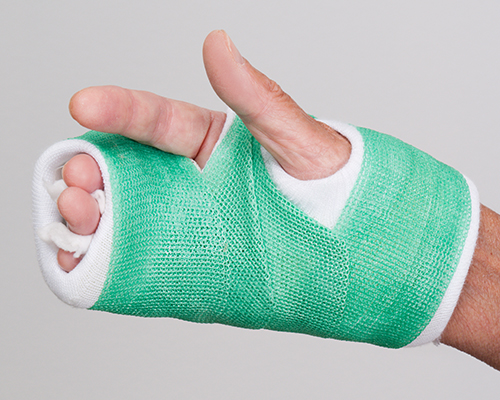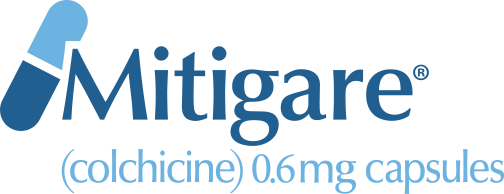
Gout is a painful form of inflammatory arthritis that is caused by excess uric acid in the bloodstream.1 If you have gout, your doctor may have recommended that you reduce your uric acid level. Reducing your uric acid level is important because it can help decrease your risk of gout flares and the potential for bone and joint damage from gout.1,2
What is the connection between uric acid and gout flares?
Uric acid is made by your body when it breaks down chemicals in certain foods.1,3 In people with gout, excess uric acid in the bloodstream can form urate crystals around the joints.1 These sharp, needlelike crystals can cause sudden episodes of intense pain, redness, swelling and/or tenderness known as gout “attacks” or “flares.”1,4
Gout flares tend to come on suddenly, often in the middle of the night.4 The most intense pain can last anywhere from four to 12 hours.4 Once the worst pain is over, some discomfort may linger for a few days or even as long as a few weeks.4
What can trigger a gout flare?
Eating foods such as steak, organ meats (such as liver) and certain kinds of seafood can trigger a gout flare.1 Other potential dietary culprits are alcoholic beverages and sugary drinks.1
Gout flares can also be brought on by the use of medications such as:
- Diuretics5
- Low-dose aspirin5
- Anti-rejection medicines (given after organ transplant)5
- Urate-lowering therapy (ULT)6
It is important to note that, if you have been prescribed any of these medications, do not stop taking them without first talking with your doctor.
How can I tell if my gout is getting worse?
Adults who have had gout for many years typically have more frequent flares that last longer and affect multiple joints.2 They may also develop bumps under the skin called tophi.2
Tophi are hard, whitish urate crystal deposits that can appear under the skin around the joints affected by gout.2 Tophi can show up in the fingers, hands, feet, elbows or Achilles tendons.4 They can even form in the curve of the upper ear.2 Although tophi generally are not painful, they can become tender and swollen during a gout flare.4
How can I get bone and joint damage from gout?
Research has shown that, left untreated, tophi can contribute to bone erosion and joint damage.2,7 But the good news is that tophi are not necessarily permanent.2 If the uric acid level is reduced and remains normal for an extended period of time, it is possible for tophi to dissolve and eventually disappear.2
How can I help prevent bone and joint damage from gout?
If you have gout and are concerned about the long-term effects of the disease, talk with your doctor. He or she may be able to prescribe medicine and/or recommend lifestyle changes that can help manage your uric acid level. If you are already taking ULT, be sure to ask your doctor about medicine to prevent gout flares.
NOTE: This article was not written by a medical professional and is not intended to substitute for the guidance of a physician. These are not Hikma’s recommendations for gout flare prevention, but rather facts and data collected from various reliable medical sources. For a full list of resources and their attributing links, see below.
